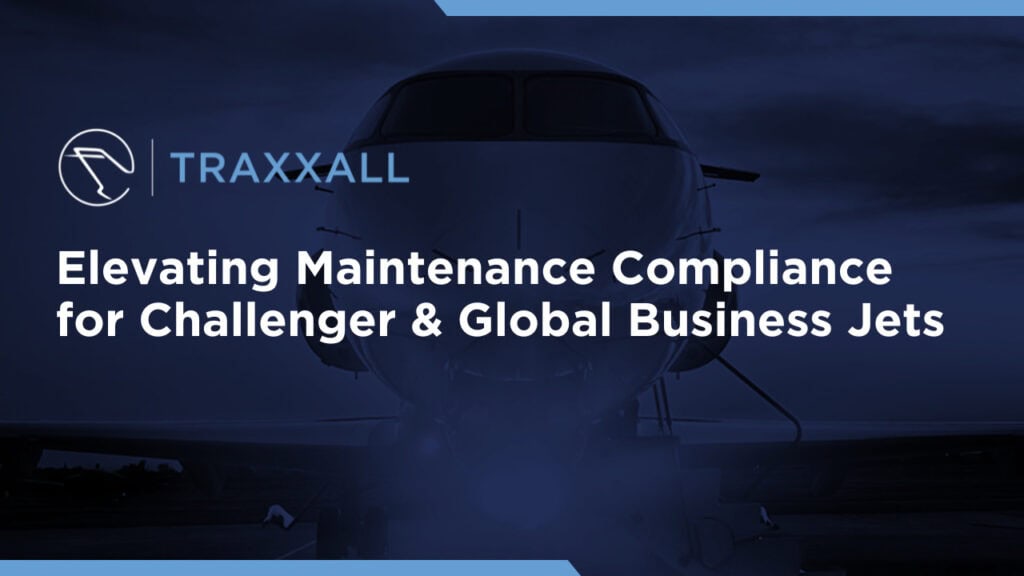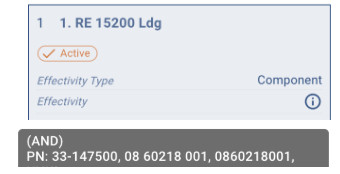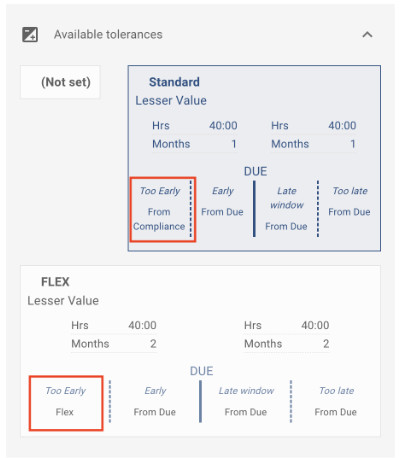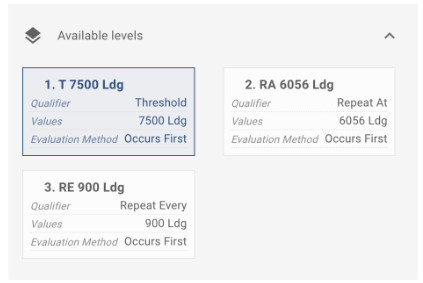
Since the early days of aviation, preventative maintenance schedules were created to ensure the safety and reliability of aircraft. Over time, the approach to creating maintenance schedules has evolved, and today all of the modern business and commercial aircraft manufacturers utilize MSG-3 (Maintenance Steering Group-3) methodology for establishing cost effective and efficient preventative maintenance schedules to ensure airworthiness and safety.
When you crack open the maintenance manual of nearly any business aircraft, you are going to see a lot of similarities across all OEMs and models – typically a chapter-by-chapter breakdown of task codes, a description of the inspection or life limit, and the interval at which it needs to be done. At first glance, it all seems pretty simple, but when you start diving into the details of each make & model, you may find nuances and variables that can have a big impact on maintenance planning, compliance, and flight operations.
In this post, we are going to focus on some of the intricacies of the Bombardier Challenger and Global maintenance programs and how the Traxxall platform assists operators in managing their maintenance forecast, compliance & record keeping, and revisions to the OEM maintenance schedule.
Founded in 2014, Traxxall’s vision was an easy-to-use, modern solution for aircraft maintenance tracking, backed by expert analyst support. The founding members of the team were former Bombardier employees and had a deep understanding of the aircraft maintenance schedules, compliance, reliability, and limitations of the other maintenance tracking solutions in the industry at the time. Fast forward to today, Traxxall now supports over 4,000 aircraft worldwide, with a team of roughly 200 professionals, including former DOMs, IAs, Technicians, and Pilots. Our customer base includes Fortune 500 flight departments, top 10 charter operators, and the largest operator of Bombardier Global 7500s in the world.
1. Master Core Templates: The backbone of the Traxxall platform is something we call “Master Cores”. They are templates, based on the OEM maintenance schedule for each piece of major equipment installed on the aircraft. The Master Cores are tightly coupled to each aircraft and when a new revision to the maintenance manual is published, it ensures that your aircraft is tracking the latest requirements. (Note: if you are following a custom or approved maintenance program, we can accommodate customizations to your aircraft and hold off on pushing revisions until your program is revised.)
2. Aircraft / Task Intelligence: When we build your aircraft profile, we can leverage another level of intelligence that is built into our Master Core, which gives Traxxall the power to ensure that your aircraft has the proper task and requirements setup. Reviewing the maintenance schedule for both the Challenger & Global models, you will see a long list of tasks that have “variables” that could be based on some of the following criteria, and the system is able to determine, in many cases, what is the right tasks and requirement for your aircraft:
a. Aircraft Serial Number
b. Part Number
c. Pre or Post Compliance of a Service Bulletin
d. Task Category
e. Task Inspection Program
In the example below, we have a life-limited landing gear component, where you can see the requirement is applicable to the Part Numbers listed below, while hovering over the “i” button.

3. Tolerances & Flexible Tolerances: Most OEM maintenance schedules provide a tolerance or “grace period”, typically on inspection tasks, that provides the operator additional flexibility on when a task can be performed.
a. For example, a task may have a 1,000-hour interval, and a +/- 10-hour tolerance. If the task is performed inside of the tolerance window, the due time of the next inspection will not be affected. So, if the task is due at 1,000 hours and is performed at 995 hours, the due time of the next inspection should be 2000 hours. The Traxxall platform assists users in automatically calculating due times based on the tolerance rules that are in place.
b. In addition to the standard tolerances, Bombardier also has a “Flex” tolerance program which follows different rules and may have different values for tolerances at the task level. In the example below, we are looking at the Standard tolerance and Flex tolerance on a specific task. While the values for the tolerance window are different, the Flex program also provides additional flexibility when it comes to performing a task “Too Early” or before the tolerance window. For example, this task has a 36-month calendar interval:

i. Standard Tolerance:
1. Task is due 12/31/2025
2. The task is completed on 10/15/2025 (outside of the 1-month tolerance)
3. The due time on the next inspection will be 10/15/2028
ii. Flexible Tolerance
1. Task is due 12/31/2025
2. The task is completed on 10/15/2025 (outside of the 2-month tolerance)
3. The due time on the next inspection will be 12/15/2028. With the Flex tolerance, even if the inspection is performed before the tolerance window, you can still take advantage of the 2-month tolerance on the task. This helps keep your maintenance schedule as aligned as possible and can give additional flexibility in planning maintenance events.
c. In both scenarios, the Traxxall platform has the power to ensure your due times are calculating correctly, and we also have the ability to easily switch between programs if needed.
d. Threshold / Repeats: Across the Challenger and Global maintenance schedules, you will find tasks with “Threshold / Repeat” intervals. For these tasks, the operator will perform the task at a certain Threshold interval, and following the compliance, the interval will then change to a different requirement.
i. In the example below, this task has a Threshold, Repeat and what Bombardier refers to as a “Next Repeat”.

ii. This task will initially be performed at 7500 landings, then again at 6056 landings and then on repeat every 900 landings.
iii. The Traxxall platform will automatically change these intervals as compliances occur, and if the task is associated with a component, will reset the cycle in the event a new component was installed.
4. MRIP & Multiple Inspection Programs: OEMs will sometimes have multiple options for inspection programs based on the type of operator and their aircraft utilizations. Sometimes these could be referred to as HUMP (High Utilization Maintenance Program) or LUMP (Low Utilization Maintenance Program).
a. For Bombardier Challengers and Globals, there is an additional type of inspection program called the MRIP or Manufacturer’s Recommended Inspection Program, which was developed for low utilization operators.
b. Leveraging the Traxxall Master Cores, operators have the ability to transition between programs with minimal effort, whereas in other systems, there is much more work to manually transition aircraft between programs.
5. Continuous Audit: Leveraging the Master Core Templates and the functionality described in the sections above, Traxxall can perform regular audits of your aircraft data, highlighting any differences between the OEM requirements and your aircraft’s tracking.
–
If you are interested in learning more about the Traxxall platform and services and how we can help your flight operations, reach out and set up a time for a demo with one of our representatives.
About JSSI
Founded in 1989 and headquartered in Chicago, JSSI is the leading independent provider of hourly cost maintenance (HCM) programs for business aircraft engines, airframes, and auxiliary power units (APUs). JSSI’s HCM programs cover over 300 different makes and models of business aircraft.
JSSI has constructed a portfolio of complementary business lines that support owners, operators, and maintenance providers across the entire lifecycle of ownership, including parts procurement, maintenance tracking software, aircraft financing, and advisory services.
With 6,500+ aircraft supported by maintenance programs and software platforms, JSSI leverages this wealth of data, scale, and innovation to drive cost savings and provide custom solutions that align to the interests of each client, regardless of aircraft platform. Institutional investors GTCR, Genstar Capital, and Blackstone provide strong sponsorship to JSSI.
Learn more at jetsupport.com.
For media inquiries, please contact:
Isabella Rimton, VP of Marketing, JSSI
+1 302 690 7874, [email protected]

JSSI’s Hourly Cost Maintenance (HCM) Programs bring peace of mind to owners and operators of virtually any business aircraft. Our programs are designed to stabilize your maintenance budget, maximize availability, and enhance the residual value of your aircraft – offering flexible coverage options:
Engine I APU I Airframe I Tip-to-Tail®